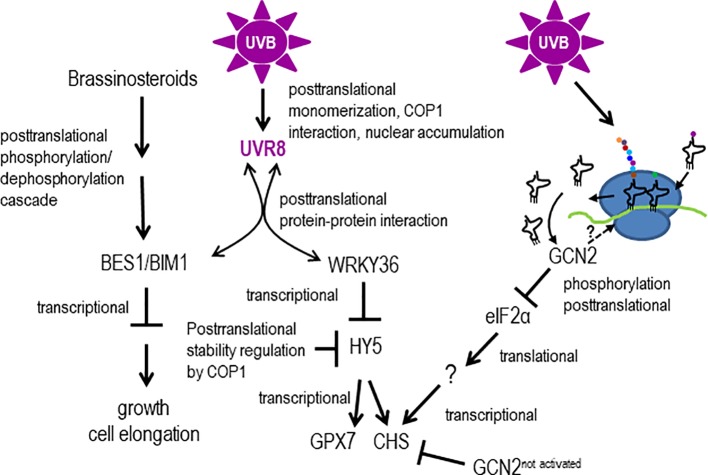Figure 8.
Models hypothesizing, how GCN2 might regulate UV-B responses. UV-B responses are mediated by transcriptional and (post)translational control involving the UV-B photoreceptor UVR8 or not. UV-B triggers UVR8 monomerization, interaction with COP1 and changes of the subcellular compartment. In the nucleus, UVR8 directly interacts with the downstream transcription factors BES1/BIM1 and WRKY36. Interaction with BES1/BIM1 and WRKY36 titrates these transcription factors away from promoters of genes involved in cell elongation and growth and allows HY5 to bind to its own and UV-B responsive promoters. Unbound COP1 destabilizes HY5. UV-B induces posttranslationally the activity of GCN2 which might be activated through structural changes of ribosomes by RNA-protein crosslinking, overaccumulation of uncharged tRNAs or direct ribosome binding. Activated GCN2 phosphorylates eIF2α and thereby changing the population of translated mRNAs. Not activated GCN2 might indirectly repress the transcription of energy demanding biosynthesis genes such as CHS.

